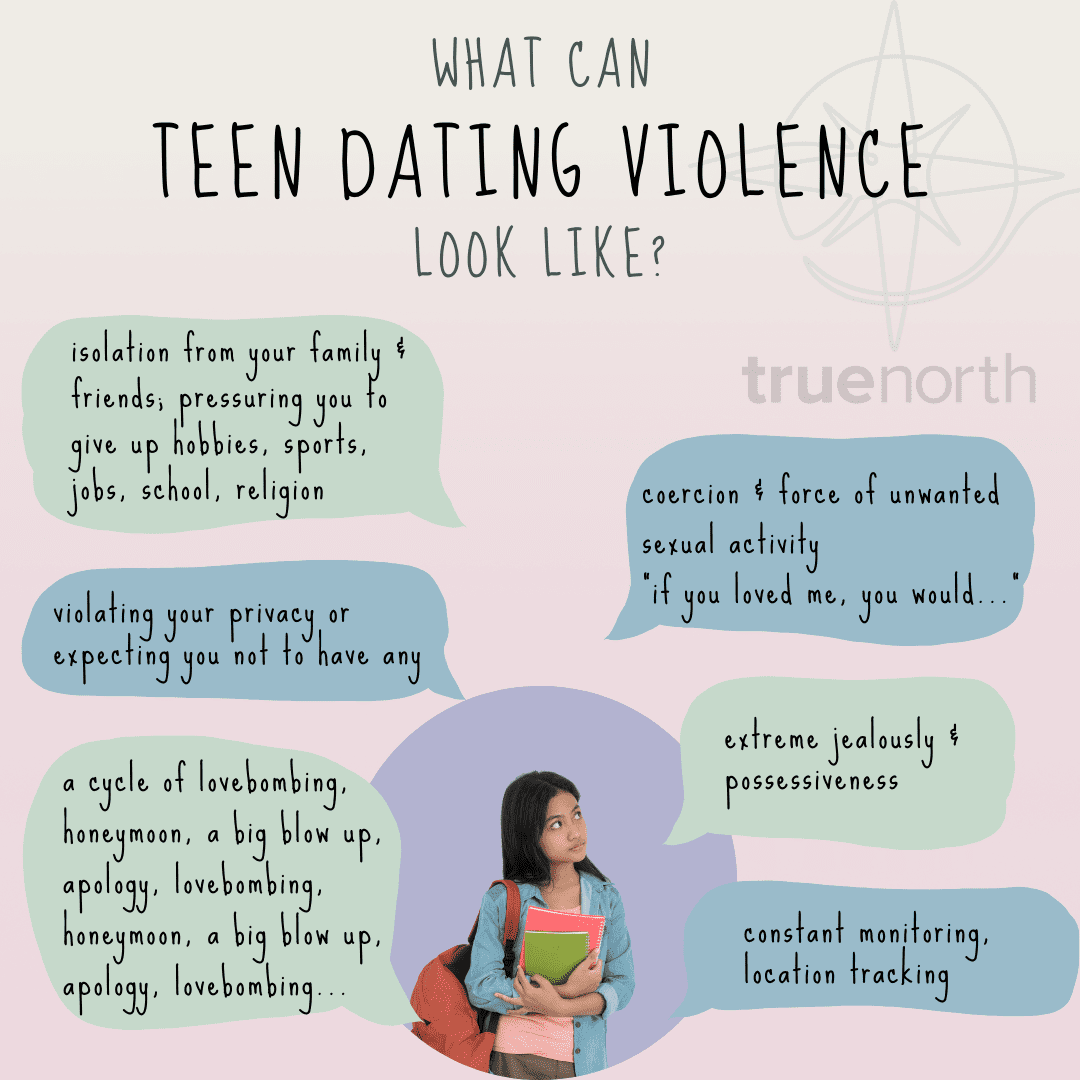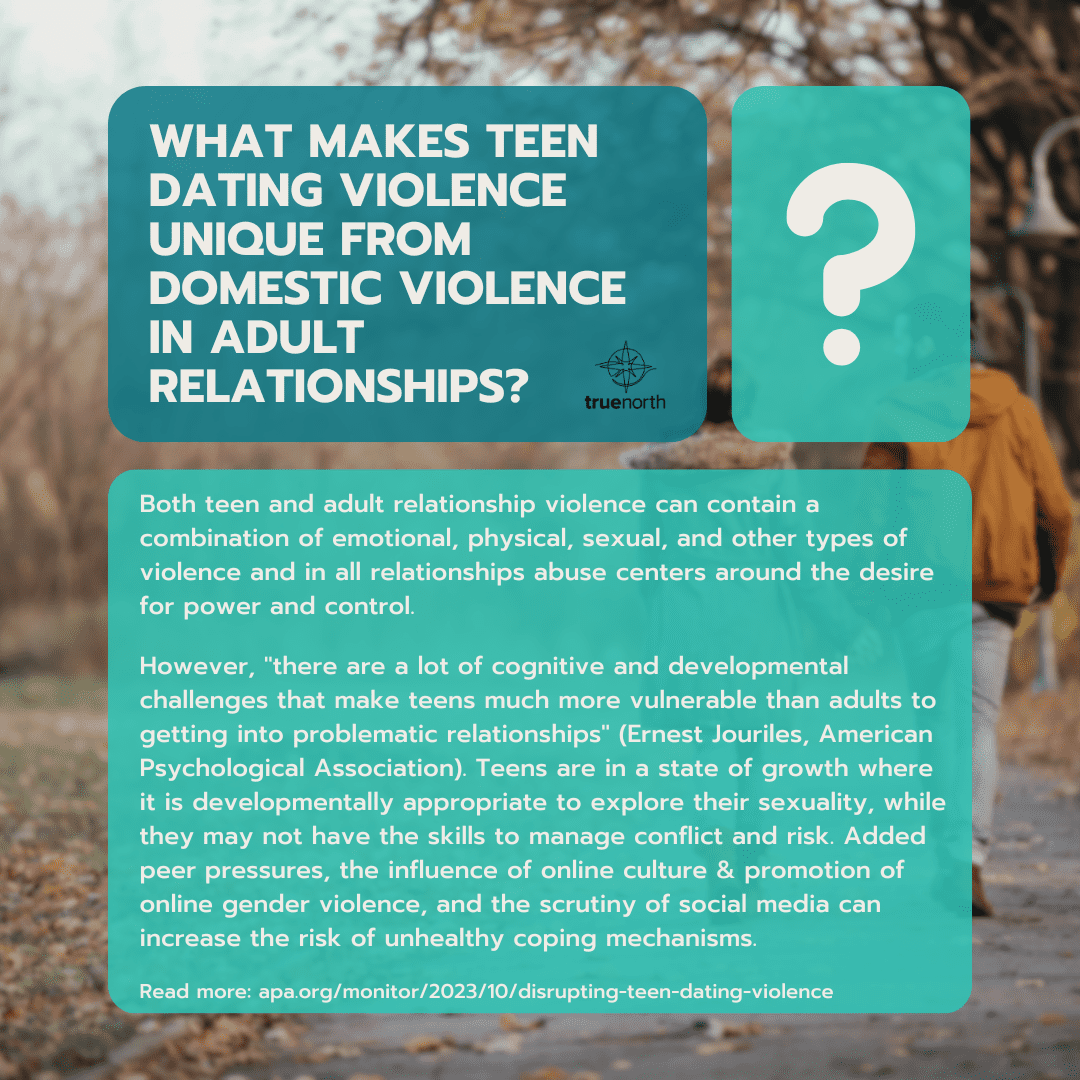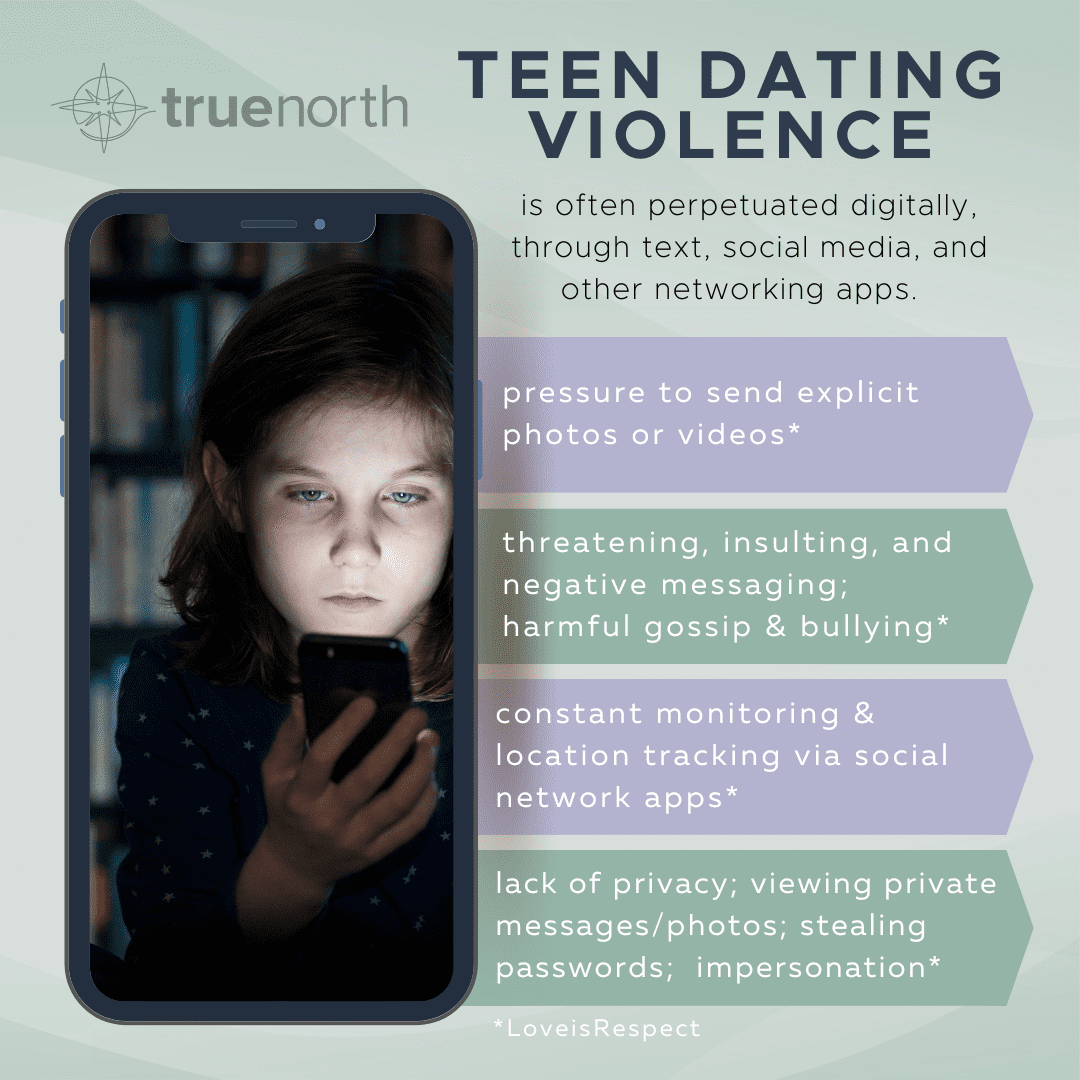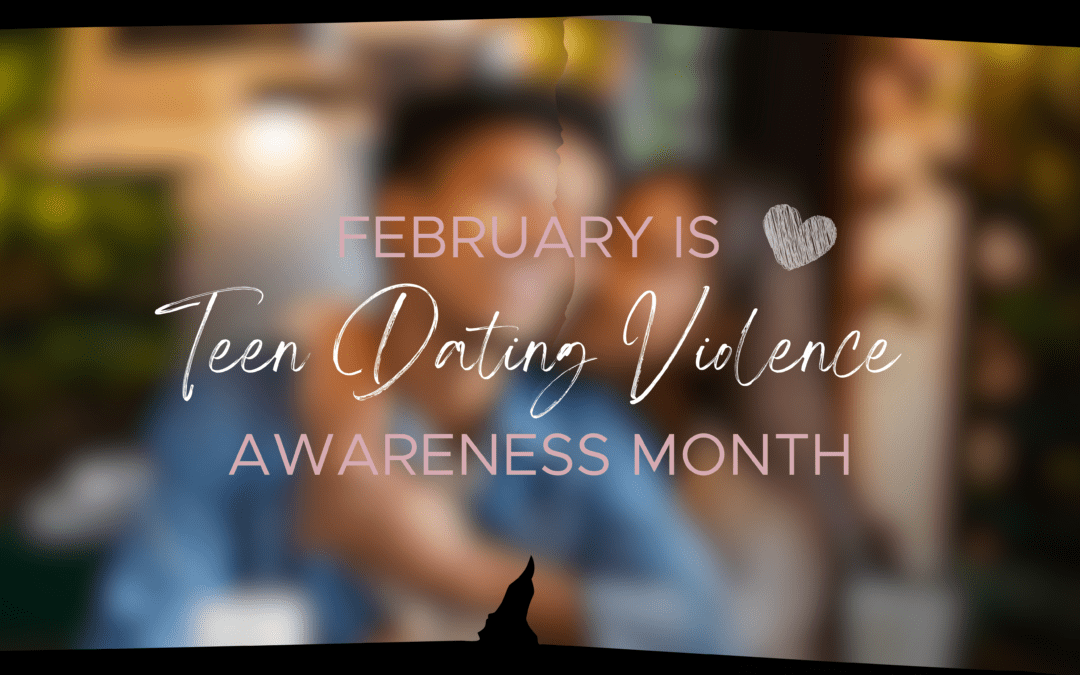Teen Dating Violence
Teen Dating Violence is a pervasive issue affecting Canada’s young people, impacting the mental, physical, and social well-being of our youth.
Youth who experience violence early in life can develop risk factors that may predispose them to intimate partner violence later. Experiencing dating aggression & violence can create a heightened stress response, unhealthy perceptions of relationship dynamics, and normalize violence as a part of interpersonal conflict.
Reducing teen dating violence takes all of us. Together, we can promote awareness: by recognizing the prevalence of this issue; bolster education: learn the tools to identify unhealthy behaviours; focus on prevention: by practicing how to self-advocate and support youth to make safe, informed choices; and support intervention: breaking cycles, modelling healthy relationships at home, and providing safety to youth facing violence. As a community, we can challenge violent behaviour and make long-lasting healthy changes, creating a healthier, safer environment for all.
Did you know?
What Can Teen Dating Violence Look Like?

Cyber Violence a Contributing Factor
Cyber (online) violence is the use of internet-connected devices and/or social media to intentionally cause harm to others. According to Statistics Canada, 1 in 5 women experience online harassment in Canada; 33% of those are young women between the ages of 15 and 24 (Government of Canada, 2022).
Teen Dating Violence is often perpetuated digitally, through text, social media, and other networking apps (like Snapchat). Cyber violence may look like hacking, impersonation, monitoring, or sharing rumours/gossip in order to humiliate and isolate an individual in daily life.
Adolescence is a key period
“Adolescence is a key period of identity development where youth acquire the knowledge and skills necessary to develop healthy relationships, all while experiencing substantial physical, cognitive, emotional and social changes. As such the negative effects associated with experiencing teen dating violence can be far reaching and long lasting” (Statistics Canada, 2024).
Teen dating violence is a growing issue
Make talking about healthy relationships a topic that grows with your child. Get comfortable with the uncomfortable; foster a safe space for your teen to ask questions about sex, relationships, and violence. Openly talk about and challenge negative images/themes about relationships that your teen might be learning from peers, friends, or social media. Starting the conversation is a great way to reduce stigma!
Get involved in your teen’s cyber usage & be aware of what they’re watching, who they’re talking to, and what they might be sharing. Not only are youth subject to many potentially harmful or dangerous attitudes about sex and relationships over social media, but 13% of teens have reported receiving unwanted sexually suggestive images or messages (Statistics Canada, 2024).
Teen Dating Violence PSA
Teens: Tips to Help Advocate for Yourself
Think about what makes you feel uncomfortable
When you think about & identify what makes you feel uncomfortable, it becomes easier for you to set boundaries.
Here are some prompts to help you get started:
- I feel comfortable / uncomfortable with my partner making me the butt of the joke.
- I feel comfortable / uncomfortable with personal displays of affection in public.
- I feel comfortable / uncomfortable with my partner tracking my location with GPS.
- I feel comfortable / uncomfortable when my partner is jealous of my friends.
- I feel comfortable / uncomfortable when my partner yells.
- I feel comfortable / uncomfortable talking to my partner about my feelings.
- I feel comfortable / uncomfortable trusting my partner to make choices with my best interests in mind.
Think about your values & beliefs
When you define your values, you discover what’s truly important to you.
Reflect on your experiences, memories, and relationships that are most important to you – what feelings stand out?
When you think about a healthy relationship – who comes to mind and how they interact with each other?
Think about your goals – what values do you need to achieve them?
Practice saying NO.
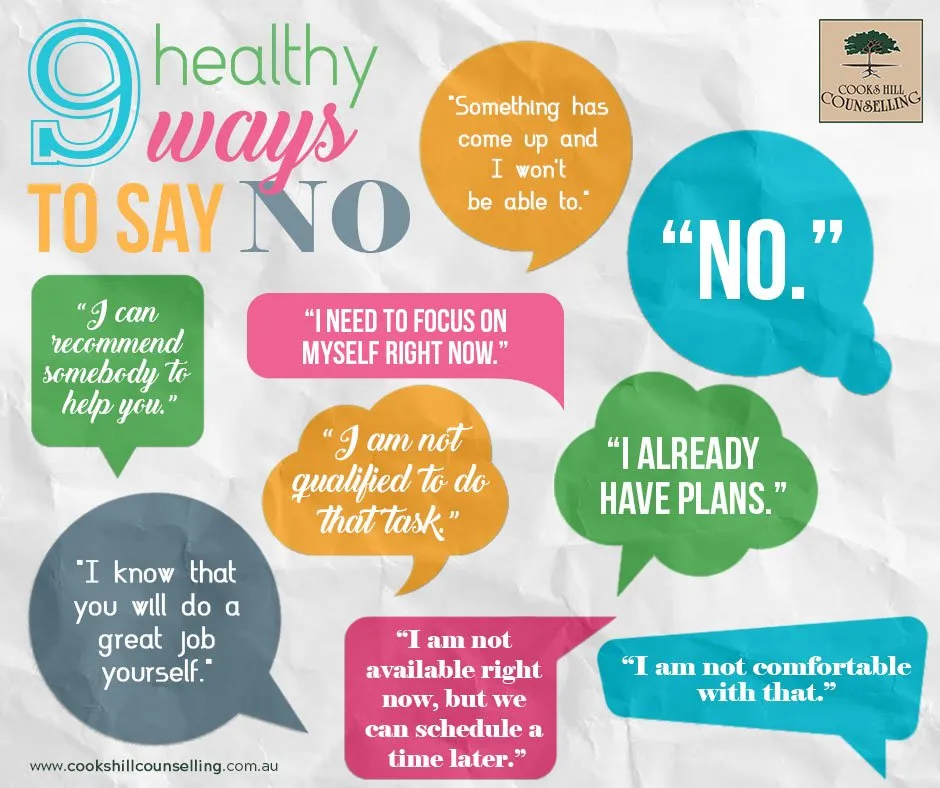
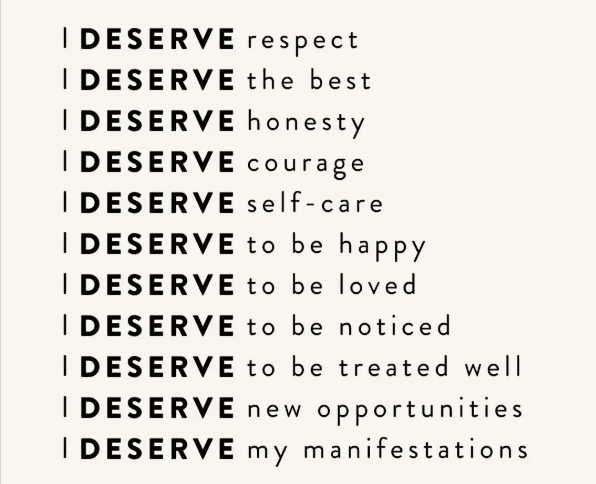
Improve your Communication Skills
- Start small! Practice your skills with your family and friends.
- Work on active listening: be present, engage your body language, ask questions & clarify. Seek to understand, not to respond.
- Try using “I” statements instead of “You” statements. (Instead of “You’re so lazy!” try “I feel frustrated after we hang out and my room is mess.”)
- Focus on the person, not the issue: everyone is trying to get their needs met.
- Aim for problem-solving mindset (don’t get stuck arguing just for the sake of arguing!).
Set Boundaries
Setting boundaries can be hard, but boundaries tell others how you want to be treated and what kinds of behaviours you will not tolerate. Boundaries help keep us safe and set up a conversation about consent.
Setting boundaries can also be scary. You’re going to have moments where you feel uncomfortable. Embrace the weirdness: if an uncomfortable conversation helps you stay healthy and safe, don’t avoid the awkwardness.

Take time to calm down when you’re upset
If you or your partner are angry or upset, take a break before trying to resolve the conflict. When we are escalated the problem-solving part of our brain slows down. Trying to force a resolution isn’t going to work. Take a break, get some space, and come back to the topic when you’re both calm.
What can caregivers do about Teen Dating Violence?
Foster a safe space that your teen feels comfortable going, to talk about relationships, sex, and sexuality
“Even as we acknowledge the critical importance of conversations about sex and sexuality, let’s not pretend that they’re super comfortable to get started… It’s important to make sure young people learn not only the correct facts about sexuality, but also how to make healthy and safer decisions about sex. Research shows that parents who talk openly about sexuality to their children have more influence over their child’s sexual behaviors as they grow.”
Continue learning with the Center for Parent & Teen Communication
Model healthy relationships, communication and stress regulation skills
“Studies show that children whose parents model healthy relationships tend to have better social skills and more positive peer relationships. Additionally, conflict resolution skills taught at home can reduce bullying and promote more collaborative friendships. Modeling healthy relationships for children is one of the most impactful ways parents can teach social and emotional skills.”
Read on for practical tips for parents to demonstrate positive relationship behaviors from Child & Family Development.
Be active in your teen’s cyber usage and routinely challenge unhealthy or dangerous attitudes
Online spaces and social media algorithms are promoting attitudes and behaviours that justify and incite violence against women and girls.
“Male supremacist views have surged on TikTok and podcasting platforms, with personalities ranting about the rights of “high value” or “hypermasculine” men – those that they define as wealthy, confident, influential, sexually dominant and entitled to subservience from women.
If left unchecked … There is a clear pipeline between misogynist content and larger channels of hate.”
Talk about consent and boundaries with your teen
Help your teen practice setting boundaries, expressing their needs, and using their voice!
Teaching teens about consent supports youth to respect their own bodies, the boundaries of others, and empowers them to say “no” when needed.
Tips when Talking about Teen Dating Violence
Start a Conversation
Point out the signs that worry you. Sometimes we all just need a fresh pair of eyes to help us think, “Okay, I’m not being too sensitive, this doesn’t make me feel safe.”
Be Supportive & Nonjudgmental
Remember your teen is navigating a complex world of relationships, social pressures, developing beliefs about love and sex, while managing their hopes, dreams, and their parent’s expectations. Its not uncommon in an abusive relationship for there to be feelings of shame, guilt, and reduced feelings of self-worth. Take the time to listen and validate your teen’s experiences and emotions. Avoid lecturing, interrupting, or making accusations.
Remind your Teen You are there for Them
Stress that you are on your teens’ side, no matter what. You are there to love and support them.
Believe Your Teen
Many youth experiencing violence do not reach out for support due to social stigma and fear that their parents just wouldn’t understand. Remember, what’s normal for you is likely not normal for your teen Believe your teen’s experiences.
Be Honest & Firm
No one deserves abuse.
Love is not violent. Love is not jealous. Love does not belittle, humiliate, intimate, or hurt.
Everyone deserves a safe and healthy relationship.
Encourage your teen to Lead the Conversation
Welcome conversation, debate, and solutions. Remind your teen it is your responsibility to help keep them safe. Support your teen in finding solutions to manage conflict, stress, or end a dangerous relationship.
Graphics to Share about Teen Dating Violence
